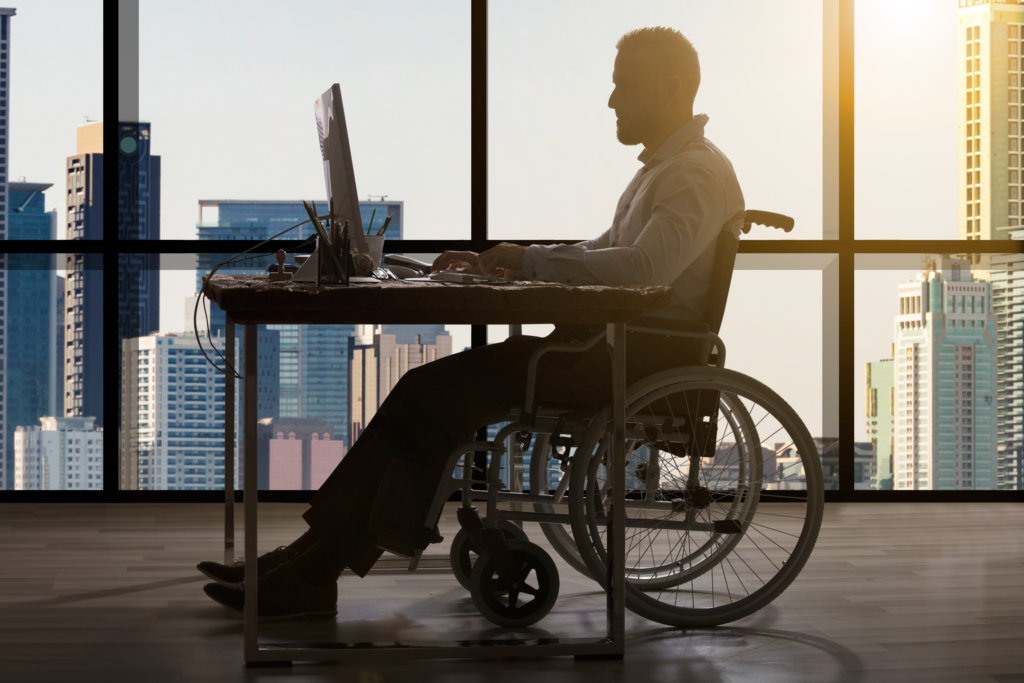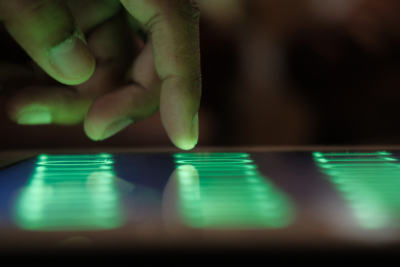UX: Let’s make tech accessible

It’s not a new concept: from lifts on the Underground to ramps into public buildings, we’re all used to seeing the real-life equivalent of accessibility features as we go about our day. Airbnb hosts are encouraged to list any issues or benefits on their ads. Public buildings and new built spaces are expected to take disabled visitors’ needs into account as well.
However, challenges still prevail, both in technology and in real life. Despite the fact that over 10 million people (over 18% of the population) have a limiting long-term illness, impairment or disability, they are often simply forgotten.
As in life, so it is online
Like restaurants that have invested in wheelchair ramps but hidden them at the back of the building, lots of ‘real life’ and online places are technically accessible. But the extra time and effort needed to use it means the problem isn’t really being solved and disabled people are still being excluded.
In fact some measures seem to have been taken with an insultingly thoughtless, check-box mentality. In June 2022, Wireless Festival at Crystal Palace decided to pitch the accessible viewing platform at the top of a hill to save money, requiring patrons’ friends to push their wheelchairs up a 10% incline or carry them! I wonder how many websites are similarly inconsiderate of actual needs for certain users.
On the other hand, treasured old buildings and ancient pieces of tech alike were often simply not built with accessibility in mind. When visiting Madame Tussauds with a friend who walks with a stick and finds stairs agonising, we used a total of 4 randomly located lifts to access 5 floors. They required us to weave through exhibits the wrong way and wait around for staff help. As a mind-bending response to a building that’s almost two hundred years old it’s better than nothing, but nobody would design it that way if they’d thought about accessibility first.
Online leads the way
Online systems that are built first and add accessibility only once the product is complete face similar risks. The infrastructure of our lives is no longer solely built around physical spaces: it’s built around online ones too, where we now conduct every conceivable part of our lives. According to a Deque survey and research, 73% of accessibility professionals saw an increase in accessibility awareness on digital channels throughout the pandemic. Not being able to access these spaces can hugely restrict access in their lives, restricting them from opportunities.

Actively discriminating against anyone is of course illegal – and there can be hefty fines and reputational damage for not adhering to WCAG standards. What’s often forgotten is that systems that don’t think about disabled users ultimately exclude by default. It’s worth remembering that anyone can become disabled, even if it’s just a broken arm that restricts typing for six weeks or an ear infection that leaves you temporarily deaf. More than that, accessibility features benefit all users such as captions on video content benefitting a user in a noisy office. We all win when accessibility is considered.
Value UX and value your users
Code is easier to rework than bricks and mortar. But what’s easiest of all is building things right from the beginning . Understanding that all users need an equally positive experience is crucial.
Karen Hawkins of eSSENTIAL Accessibility, the world’s #1 Accessibility-as-a-Service platform, has emphasised the importance of making sure ‘foundational elements are as accessible as possible, these foundational elements being colours, but also typography, small atoms and molecules, like your buttons and your links and your text boxes – they get used everywhere’.
Adopting the right mindset where accessibility is the default and not a bolt-on is an ideal way to start. Don’t stop at whether it is possible for a disabled user to complete a task – also consider how easy and fast it is too.
Ask your customers about their disabled user base and see if you can speak to disabled users as part of gathering requirements. However, they may not have the best visibility of such users – in fact the customer may not have put any thought into accessibility at all. This can be an area where tech developers can provide leadership as well as creative ideation about the potential needs of unknown users.
Specific accessibility features might include using subtitles or transcripts for all video content. Or it could involve using a high contrast ratio between text and background, relying on more than just colour to convey important information. Furthermore – do things like screen readers work accurately? Will the screen flash causing fits in some users? How about automatic log outs due to inactivity – which could impact users with movement issues, who may take longer completing forms? Will the complexity of any language be difficult for some users? Considering and including these features from the onset as well as testing them on users with disabilities can save time and money later on.